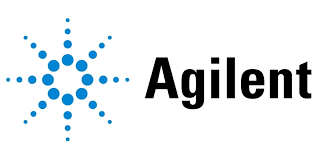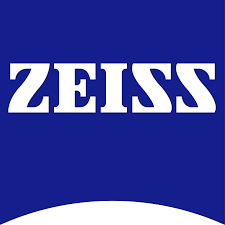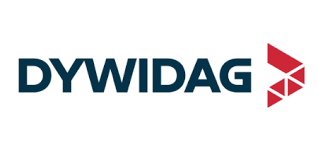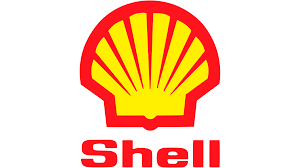Spasticity Treatment Market Report
Published Date: 15 December 2025 | Report Code: spasticity-treatment
Spasticity Treatment Market Size, Share, Industry Trends and Forecast to 2033
This report provides an in-depth analysis of the Spasticity Treatment market trends, segmentation, regional insights, and forecasts from 2023 to 2033, catering to stakeholders and decision-makers in health care and pharmaceutical sectors.
| Metric | Value |
|---|---|
| Study Period | 2023 - 2033 |
| 2023 Market Size | $2.50 Billion |
| CAGR (2023-2033) | 6.5% |
| 2033 Market Size | $4.77 Billion |
| Top Companies | Ipsen, Allergan, Merz Pharmaceuticals, UCB, Revance Therapeutics |
| Last Modified Date | 15 December 2025 |
Spasticity Treatment Market Report (2023 - 2033)
Spasticity Treatment Market Overview
Customize Spasticity Treatment Market Report market research report
- ✔ Get in-depth analysis of Spasticity Treatment market size, growth, and forecasts.
- ✔ Understand Spasticity Treatment's regional dynamics and industry-specific trends.
- ✔ Identify potential applications, end-user demand, and growth segments in Spasticity Treatment
What is the Market Size & CAGR of Spasticity Treatment market in 2023?
Spasticity Treatment Industry Analysis
Spasticity Treatment Market Segmentation and Scope
Tell us your focus area and get a customized research report.
Spasticity Treatment Market Analysis Report by Region
Europe Spasticity Treatment Market Report:
The European market is estimated to grow from USD 0.78 billion in 2023 to USD 1.48 billion by 2033, propelled by stringent healthcare policies and increased funding for neurological treatments.Asia Pacific Spasticity Treatment Market Report:
In the Asia Pacific region, the market is projected to grow from USD 0.49 billion in 2023 to USD 0.94 billion by 2033, reflecting an increase in healthcare facilities and enhanced awareness of spasticity treatment options.North America Spasticity Treatment Market Report:
North America leads the market with a size of USD 0.85 billion in 2023, anticipated to reach USD 1.63 billion by 2033. This is driven by advanced healthcare infrastructure and a high prevalence of neurological disorders.South America Spasticity Treatment Market Report:
The South American market is expected to expand from USD 0.15 billion in 2023 to USD 0.28 billion by 2033. The growth is assisted by improvements in healthcare access and rising investments in neurological research.Middle East & Africa Spasticity Treatment Market Report:
The Middle East and Africa market size is projected to rise from USD 0.23 billion in 2023 to USD 0.44 billion by 2033 due to improving healthcare standards and the integration of advanced treatment methodologies.Tell us your focus area and get a customized research report.
Spasticity Treatment Market Analysis By Treatment Type
Global Spasticity Treatment Market, By Treatment Type Market Analysis (2023 - 2033)
The spasticity treatment market by treatment type comprises pharmacological, non-pharmacological, and surgical treatments. In 2023, pharmacological treatments constitute a significant portion with a market size of USD 1.66 billion (66.43% market share), projected to grow to USD 3.17 billion by 2033. Non-pharmacological treatments follow, with a market size of USD 0.64 billion (25.49% market share), expected to rise to USD 1.22 billion. Surgical treatments, while smaller in size, also play a critical role, growing from USD 0.20 billion (8.08% market share) to USD 0.39 billion.
Spasticity Treatment Market Analysis By Cause
Global Spasticity Treatment Market, By Cause Market Analysis (2023 - 2033)
The dominant segment in the spasticity treatment market is neurological conditions, beginning with a market size of USD 1.66 billion in 2023 (66.43% share), expected to expand to USD 3.17 billion. Following are musculoskeletal conditions at USD 0.64 billion (25.49% share) in 2023, projected at USD 1.22 billion, and other causes representing USD 0.20 billion (8.08% share) intended to reach USD 0.39 billion by 2033.
Spasticity Treatment Market Analysis By End User
Global Spasticity Treatment Market, By End-User Market Analysis (2023 - 2033)
End-user segmentation reveals hospitals leading with a market size of USD 1.66 billion in 2023 (66.43% share), anticipated to achieve USD 3.17 billion by 2033. Rehabilitation centers follow with USD 0.64 billion (25.49% share), expanding to USD 1.22 billion, and home care settings, although smaller, are expected to grow from USD 0.20 billion to USD 0.39 billion.
Spasticity Treatment Market Analysis By Region
Global Spasticity Treatment Market, By Region Market Analysis (2023 - 2033)
Geographically, North America holds the largest share with a market size of USD 1.16 billion (46.46% share) in 2023, expected to expand to USD 2.22 billion. Europe follows with USD 0.58 billion (23.28% share), projected to grow to USD 1.11 billion. The Asia-Pacific region has a smaller market size of USD 0.25 billion (10.07% share) expected to reach USD 0.48 billion, while South America, with USD 0.25 billion (10.1% share) is similarly projected to grow to USD 0.48 billion by 2033.
Spasticity Treatment Market Trends and Future Forecast
Tell us your focus area and get a customized research report.
Global Market Leaders and Top Companies in Spasticity Treatment Industry
Ipsen:
A global biopharmaceutical group focused on innovation. Ipsen provides innovative therapeutic solutions to treat botulinum toxin and spasticity.Allergan:
A leader in the pharmaceutical and biotechnology industry, Allergan is known for its neuromodulator products, particularly Botox for treating spasticity.Merz Pharmaceuticals:
Merz specializes in treatments for neurological disorders including spasticity, focusing on innovative therapies and high-quality care.UCB:
UCB is a biopharmaceutical company dedicated to the research and development of treatments for neurological and rare diseases, including spasticity.Revance Therapeutics:
Revance focuses on innovative therapeutic solutions with an emphasis on revitalizing the treatment landscape for spasticity.We're grateful to work with incredible clients.









FAQs
What is the market size of spasticity Treatment?
The global market size for spasticity treatment is approximately USD 2.5 billion in 2023, with a projected CAGR of 6.5%. By 2033, the market is expected to grow significantly, reflecting increasing demand and advancements in treatment options.
What are the key market players or companies in this spasticity Treatment industry?
Major players in the spasticity treatment market include pharmaceutical giants specializing in neurological treatments. Leading companies focus on innovative therapies, including pharmacological and non-pharmacological approaches, to improve patient outcomes in managing spasticity.
What are the primary factors driving the growth in the spasticity Treatment industry?
Key factors driving growth include rising incidence of neurological disorders, increased awareness and diagnosis of spasticity, and advancements in treatment modalities. Additionally, supportive government initiatives and research funding contribute to the expanding market.
Which region is the fastest Growing in the spasticity Treatment?
North America is the fastest-growing region for spasticity treatment, with a market size expected to reach USD 2.22 billion by 2033. Europe and Asia-Pacific also show significant growth potential, supported by enhanced healthcare infrastructure and increasing demand.
Does ConsaInsights provide customized market report data for the spasticity Treatment industry?
Yes, ConsaInsights offers customized market report data tailored to the spasticity treatment industry. Clients can access detailed analyses, forecasts, and insights specific to their requirements, enhancing informed decision-making on investments and strategies.
What deliverables can I expect from this spasticity Treatment market research project?
Expect comprehensive deliverables that include detailed market analysis, growth forecasts, competitive landscapes, and segment data. Reports will also provide insights on regional dynamics and emerging trends relevant to spasticity treatment.
What are the market trends of spasticity Treatment?
Emerging trends include increasing adoption of non-pharmacological treatments, a focus on personalized medicine, and innovative approaches to rehabilitation. Additionally, advancements in technology, including digital health solutions, are shaping the future of spasticity treatment.
